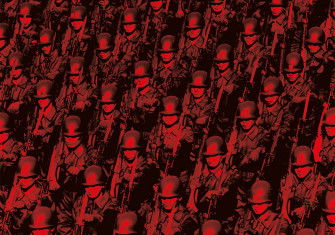Pearl Harbor and Japanese-Americans
Following the attack of 7 December 1941, many Japanese-Americans were guilty until proven innocent in the eyes of the US government.

Immediately after the attack, US animosity toward Japanese-Americans reached a fever pitch. All of the photographs displayed in this article were taken just after the attack. The locations were southern California and ‘Little Tokyo’, an area in downtown Los Angeles where around 20,000 Japanese-Americans lived. The picture above is fascinating on a number of levels. The American newsboy stands out, surrounded by Japanese-Americans. Perhaps he is attempting to remain calm and not make eye contact with the Japanese newsboy standing next to him. ‘Japan Attacks Hawaii, Manila’, the Los Angeles Examiner’s top line reads.







![‘Scientific Researches! New Discoveries in Pneumaticks! [sic] or an Experimental Lecture on the Powers of Air, May 23, 1802’, by James Gillray. Minneapolis Institute of Art. Public Domain.](/sites/default/files/styles/teaser_list/public/2025-03/lecture_history_today_0.jpg?itok=mHN_obPV)